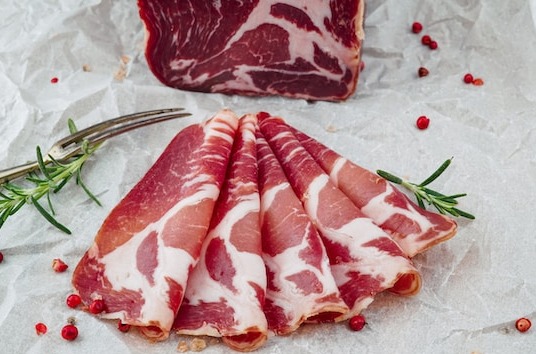W46 Pork Update: Brazil’s Pork Exports Surge in 2023 While Pork Prices in China and the UK Fall Due to Oversupply and Demand Challenges

Brazil’s Pork Exports Surge in 2023 While Production Cost Rise in Oct-23
The Brazilian Meat Association (ABPA) reports that Brazil’s pork exports (fresh and processed products) totaled 1.013 million metric tons (mmt), valued at USD 2.36 billion from Jan-23 to Oct-23, a 9.6% rise in volume and a 13.1% increase in value compared to the same period in 2022. However, Oct-23 shipments amounted to 93 thousand metric tons (mt), worth USD 200.3 million, a 5.7% year-on-year (YoY) drop in volume and a 15.5% YoY decrease in value. China remained Brazil’s primary export market, accounting for 336.5 thousand mt despite an 8% YoY decline in the first 10 months of 2023. Other key markets include Hong Kong, the Philippines, Chile, Singapore, and Vietnam, all with significant volume increases in volume. Santa Catarina, the leading pork-exporting state, shipped 542.7 thousand mt during the period, an 8.9% YoY increase. ABPA expects Brazilian pork exports to reach 1.2 mmt by the end of 2023, a 9.6 YoY increase. Besides the robust demand from China, Brazil is strategically expanding its exports to other high-demand markets, including Mexico.
The Poultry and Swine Intelligence Center (CIAS) indicates that the continuous decline in production costs for pigs since Jul-23 was ceased in Oct-23. The ICPSuíno index increased by 2.59% month-on-month (MoM) to 336.16 points in Oct-23. The rise in the ICPSuíno index was primarily influenced by a 3.19% increase in animal feed costs, constituting 73.51% of the total expenses. Overall, the index has accumulated a variation of -27.22% since Jan-23 and -25.17% over the last 12 months. Consequently, the total production cost per kilogram (kg) of live pigs in a full-cycle system in Santa Catarina reached USD 1.21 in Oct-23, an increase of USD 0.031/kg compared to Sep-23. Notably, the modification in technical coefficients implemented in Jan-23 contributed to a reduction of 16.2%, with prices accounting for the remaining accumulated variation throughout the year and the last 12 months.
Pork Prices Fall in China Due to Sustained Oversupply
Pork prices in mainland China have experienced an eight-week consecutive decline in recent weeks, sparking concerns about the sustainability of this downward trend. Experts indicate that the current pig production capacity is disproportionately high, providing no grounds for an imminent surge in pork prices in the near future. Some experts suggest that the persistent downwardly trending pork price downturns might exacerbate deflationary pressures in mainland China. The Ministry of Agriculture and Rural Affairs indicates that the average pork price in the wholesale market stood at USD 2.89/kg on November 7, an 8.3% drop compared to the USD 3.15/kg on September 7. This scenario reveals an uninterrupted decline in the national pig and pork prices for eight consecutive weeks, with cumulative drops of 9.5% and 6.1%, respectively, since early Sep-23.
Additionally, the national average price of piglets has seen a nine-week continuous decline since Aug-23, marking a significant 22.7% decrease. The national average price of piglets reached USD 3.61/kg in W4 of Oct-23, a notable 45.4% YoY decrease and returning to 2021 levels. The average wholesale price of white-striped pigs at Beijing Xinfadi Agricultural Products Wholesale Market traded at USD 2.57/kg in W46, a 7.12% MoM decrease, and a substantial 42.97% YoY decline. Industry experts express a lack of optimism for H1-2024, citing abundant pork supply, the anticipated peak period for pig slaughter, and elevated frozen pork inventories contributing to a sustained high level of pork supply.
Pig Prices in the UK Drop Amid Global Pressures and Domestic Challenges
The Agriculture and Horticulture Development Board (AHDB) reports that pig prices in the United Kingdom (UK) have declined over the past two months, influenced by sluggishness in the European Union (EU) market. The EU-spec Standard Pig Price (SPP) dropped by USD 0.049 in the past four weeks, reaching USD 2.73/kg as of November 4. While remaining above the five-year average and 2022 levels, this decline aligns with diminishing prices in the EU. The EU's average reference price dropped by USD 0.38/kg in almost four months. Sluggish domestic and global demand, coupled with rising geopolitical uncertainty, inflation, and a cost-of-living crisis, have collectively exerted downward pressure on prices. Pig meat retail purchases fell by 2.6% YoY as of October 1, with more expensive products experiencing significant declines, while bacon, sausages, and mince could notwere unable to compensate for these losses. Despite growth in UK food-service pork consumption, the overall utilization declined by 1.3% YoY as of September 3. Although production conditions are trailing behind 2022, the current supply situation, with 152 thousand estimated clean pig slaughters as of November 4, could exert further downward pressure on prices. These trends, coupled with influences from the EU marketplace and reduced demand, may signal a continuation of easing in the market.